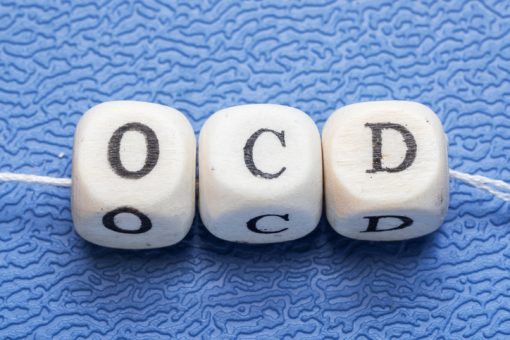 Anxiety disorders in children are characterized by a sense of overwhelming, persistent and unrealistic fear and worry. Anxiety can result in poor school performance, social isolation, and low-self esteem and may even drive your child to engage in substance abuse. “Anxiety disorder” is a general all encompassing term that covers a wide range of disorders which are all characterized by specific signs and symptoms associated with irrational worry and fear.
Anxiety disorders in children are characterized by a sense of overwhelming, persistent and unrealistic fear and worry. Anxiety can result in poor school performance, social isolation, and low-self esteem and may even drive your child to engage in substance abuse. “Anxiety disorder” is a general all encompassing term that covers a wide range of disorders which are all characterized by specific signs and symptoms associated with irrational worry and fear.
General anxiety disorder (GAD)
General anxiety disorder is characterized by excessive worry and fear about a variety of things. Signs and symptoms must be present for at least six months and this disorder must impact the overall functioning of the child’s daily activities. Children with GAD tend to be very hard on themselves and they strive for perfection. These children may also seek constant approval or reassurance from others, even when they appear not to have any worries. They may worry about their grades even though they are a straight A student. Children with GAD may worry about their health, being late for school, their relationship with their friends, potential family problems, and natural disasters. They create a pattern of unnecessary worry results in the following signs and symptoms:
- Fatigue or inability to sleep
- Inability to concentrate
- Restlessness
- Irritability
Obsessive-compulsive disorder (OCD)
Obsessive-compulsive disorder (OCD) is characterized by intrusive unwanted thoughts known as obsessions that are relieved through repetitive acts known as compulsions. Fear of contamination followed by ritualistic cleaning, need for symmetry and order followed by organizing, and concerns about losing something valuable followed by hoarding are common obsessive thoughts and compulsive actions that occur with OCD. A child with OCD might perform a ritual by chewing their food for a pre-meditated number of times that feels “just right” before swallowing. Similarly, a teenager with anorexia may count bites or pieces of food eaten in a sitting as a means of restricting or limiting portions in order to reduce caloric intake. In both of these cases, rituals are developed to reduce the anxiety caused by a triggering obsession, such as fear of eating or weight gain.
Obsessive thoughts
- Fear of contamination
- Need for symmetry and order
- Sexual thoughts
- Aggressive thoughts
- Feelings of doubts associated with leaving the stove on or doors unlocked
- Concerns about losing something or throwing away something valuable
- Fears about having a disease or medical illness
- Fears about practicing sinful behavior
Compulsive actions
- Checking
- Counting
- Cleaning
- Praying
- Rearranging, balancing and ordering
- Asking for reassurance
- Hoarding
- Binge eating
Panic disorder
Panic disorder is diagnosed if your child suffers at least two unexpected panic or anxiety attacks—which means they come on suddenly and for no reason—followed by at least one month of concern over having another attack. It is characterized by feelings of extreme worry that mimics a life-threatening situation. Symptoms include a rapid heart beat, chest pain, trembling, shortness of breath, feelings of choking, chills or heat sensation, dizziness, feeling out of control, extreme fear of dying and a numbness or tingling sensation.
Social anxiety disorder
Social anxiety disorder is characterized by excessive and lasting fear of social performance situations and activities. Examples include having feelings of humiliation, excessive worry, fear and embarrassment while using a public restroom, eating in public or speaking in public. The following are additional signs and symptoms associated with social anxiety disorder:
- Hesitance, passivity, and discomfort in the spotlight
- Avoiding or refusing to initiate conversations
- Frequently avoiding eye contact with adults or peers
- Speaking very softly or mumbling
- Appearing isolated or on the fringes of the group
- Sitting alone in the library or cafeteria, or hanging back from a group in team meetings
Separations anxiety disorder
Many children experience separation anxiety between 18 months and three years old, when it is normal to feel some anxiety when a parent leaves the room or goes out of sight. Usually children can be distracted from these feelings. It’s also common for your child to cry when first being left at daycare or preschool, and crying usually subsides after becoming engaged in the new environment. If your child is slightly older and unable to leave you or another family member, or takes longer to calm down after you leave than other children, then the problem could be separation anxiety disorder, which affects 4 percent of children. This disorder is most common in kids seven to nine years old.
Specific phobia
A specific phobia is the intense, irrational fear of a specific object, such as a dog, or a situation, such as flying. Fears are common in childhood and often go away. A phobia is diagnosed if the fear persists for at least six months and interferes with a child’s daily routine, such as refusing to play outdoors for fear of encountering a dog. Common childhood phobias include animals, storms, heights, water, blood, the dark, and medical procedures.
Posttraumatic stress disorder (PTSD)
Children with posttraumatic stress disorder, or PTSD, may have intense fear and anxiety; become emotionally numb or easily irritable; or avoid places, people, or activities after
experiencing or witnessing a traumatic or life-threatening event. These events can include a serious accident, violent assault, physical abuse, or a natural disaster. Children with PTSD often re-experience the trauma of the event through nightmares or flashbacks, or re-create them through play. They can have difficulty sleeping or concentrating. Other symptoms include nervousness about one’s surroundings, acting jumpy around loud noises, and withdrawing from friends and family.
